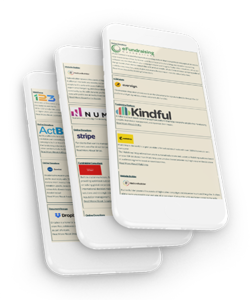When you receive transactions via a Conduit (sometimes referred to as an Intermediary or Earmark), the processing fee is often removed from the check’s total amount.
For example, you receive a Conduit check for $990. However, the splits included two $500 contributions totaling $1000. This means the processor already removed a $10 processing fee.
What is the data entry for a conduit check?
Using the example above, you would add a Monetary Contribution for $990, the exact amount you received, with the processor as the Entity. In the Splits area, add the two $500 contributions.
ISP is designed to automatically account for the $10 difference and while no actual expense transaction is created in the database, it will appear on the report as if one is there. This is for accounting purposes to ensure line totals add up correctly.
For this expense transaction that is created, we automatically convert ActBlue to ActBlue Technical Services and WinRed to WinRed Technical Services.
Can I have one transaction in a conduit check?
Having one transaction in a batch deposit might seem redundant, but is good accounting practice for two reasons. The deposit date may differ from the check date, and the batch deposit can reflect refunds and expenses if you choose to record expenses separately.
How do these appear on FEC compliance reports?
The Conduit Processing Fee transaction will appear on Line 17 if you are filing a Form 3 and on Line 21b (for both Party and Non-Party versions) if you are filing a Form 3X.
Please note that when it comes to conduit checks, they pull to reports based on the date the conduit check was received. This is in line with how joint fundraising contributions and other contributions with splits are typically reported.






